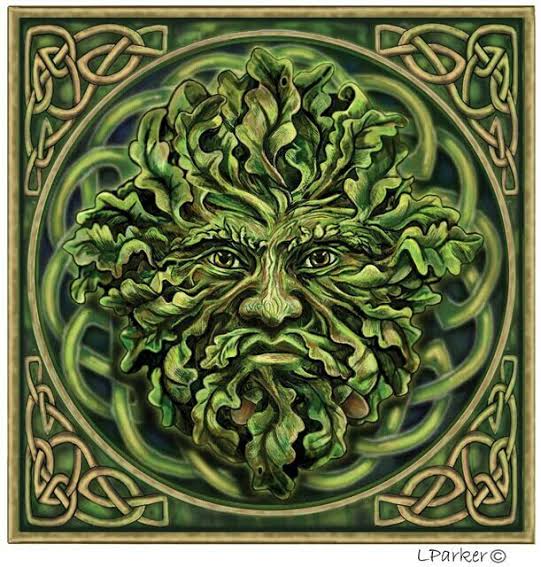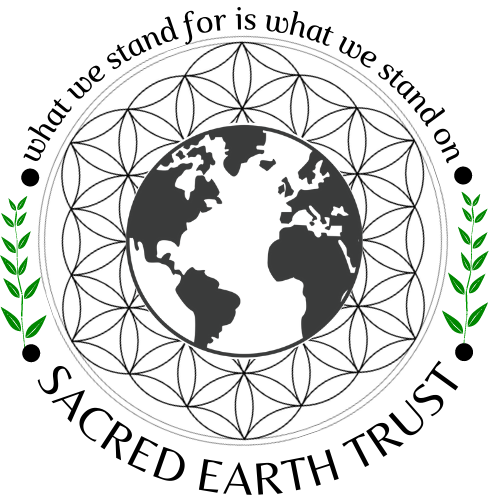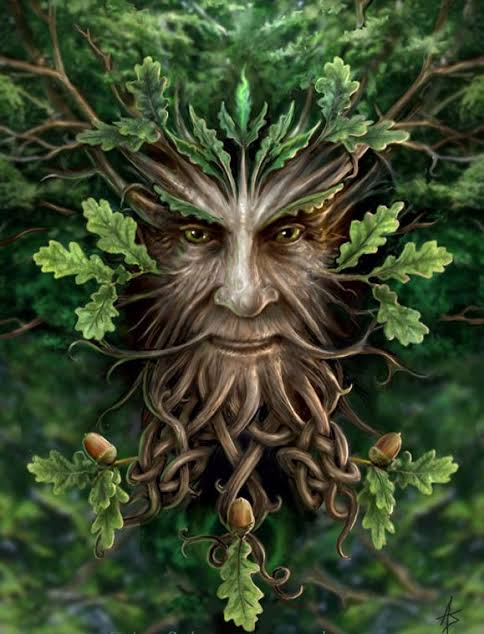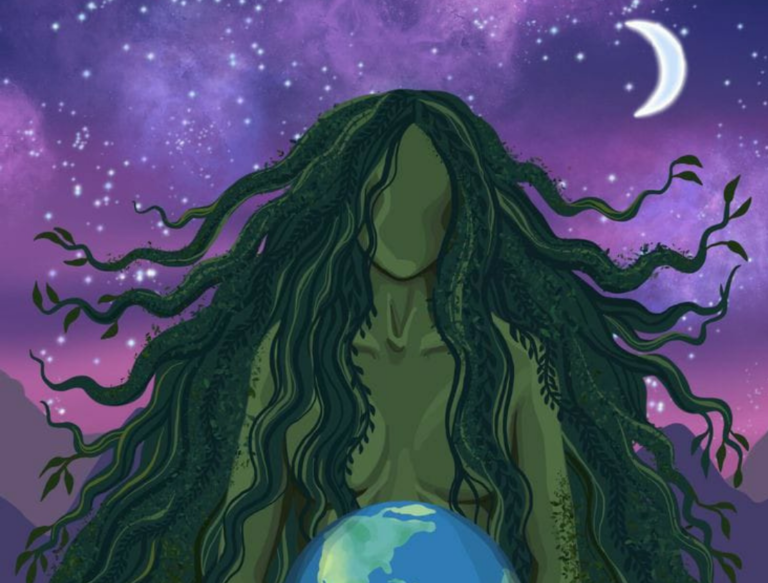Humans have always been intrigued by the wonders of nature, and the Green Man is proof of this. The weird thing is that most of us have seen the Green Man but haven’t realized what we’re looking at. The Green Man first appeared in France in the first century and flourished in British architecture from the 11th through the 15th centuries. This Wildman was essentially a Pagan figure who was venerated as apotropaic, gentle, and, associated with fertility.
We may see a decorative pattern with a human face when we look at how the Green Man is depicted. Leaves and stalks grow from its mouth and twist around the contours of its face. The mouth is generally fixed in a leer or a grin, or it just appears to be screaming in misery. Furthermore, the figure is frequently seen peering down from a ceiling. If you ever come across an ecclesiastical surface, you will most likely come across the Green Man.

The Green Man, revered as an archetypal character, has been observed in numerous cultures for over a few thousand years of documented history. However, there are suggestions that it could be considerably older. This green-foliated man’s visage, frequently with leaves growing from his mouth, may still be found in churches throughout Northern Europe.
This figure is known as Osiris in ancient Egypt, Dionysus in ancient Greece, and Bacchus in Roman times, and can be found in many incarnations throughout the Indian subcontinent. In the British Isles, he is known as Jack in the Green, Green George, and the Forest King. When discussing numerous rural celebrations from a time when we used to live in harmony with nature, the Green Man frequently appears as a key character. Furthermore, the well-known ‘Green Movement’ is frequently interpreted as a modern rebirth of the Green Man.
There are two forms in which we observe the Green Man – a simple foliate head that is often found in Europe or a head that is spewing foliage from his mouth with an intense expression. In the Indian context, this latter form is often called Kirtimukha or ‘The Face of Glory’. This could have an apotropaic function to frighten away evil or wrongdoers. Some people also seem to believe that the Green Man is a reincarnation of the Hindu god Chhepi who is there to ward evil away from temples. In fact, the more one becomes aware of the Green Man, the more we observe his presence in various disguises. The enigmatic and mysterious nature of the Green Man invites exploration of the nature we seem to thrive. Also, his persistence throughout human culture in various countries also implies that he has an important message for us today.
There were various Pre-Christian Pagan practices and superstitions that were often tied to nature, particularly through tree worship. These were discovered to be important all the way up to the Middle Ages. As a result, it’s easy to see why the Green Man appears around woodlands or on the outskirts of dense forests. According to legend, the Green Man was the central character in May Day celebrations throughout North and Central Europe in antiquity. The figure is frequently represented in these places with acorns and hawthorn leaves. These are fertility symbols that are also associated with the arrival of spring.
According to statistics from the sixteenth century, the phrase “Green Man” was frequently used in parades, pageants, and other rites. The Green Man was also frequently used as a “whiffler,” a person hired to disperse crowds so that a play or parade could take place. The Green Man would carry a club, frequently embedded with fireworks to provide a supernatural quality, to assist him in this mission.

When we talk about the first clear reference to the use of the name ‘Green Man’, George Whetstone’s play from 1578- ‘Promos and Cassandra’ comes to mind –
Actus. I. Scena. 6. Phallax,
Two men, apparelled, lyke greene men at the Mayors feast, with clubbes of fyre worke.
Phal. This geare fadgeth now, that these fellowes peare,
Friendes where weight you?
First. In Jesus Street to keepe a passadge cleare,
That the King and his trayne, may passe with ease.
It is not difficult to understand what the Green Man represents because history has left us with a wealth of information. The Green Man is thought to reflect the nature of life with its cyclical cycle of birth and death, but he also personifies the concept of rebirth and renewal of life. This connection is made based on the Green Man’s vegetative component and the annual cycle that plants go through – with Spring laying the groundwork that peaks in Summer but fades down during the dark of Winter and is reborn with the return of Spring the following year. When we observe the celebrations that are associated with the Green Man, they often take place around May when green new shoots spring up from the ground after the advent of a harsh winter.
Furthermore, when looking at the Green Man at a global level, he basically represents plant ecosystems – mainly forests. We already know in theory how important forests are to us. Chlorophyll, a key component is the transfer of Carbon Di Oxide, and Oxygen is green and thus the dominant color of the Green Man. In this way, the Green Man also represents the ability to transform the energy of the Sun into life-supporting outcomes such as climate stability and food production for animals. This partnership between plant life and the Sun reinforces the Green Man as a positive masculine influence since the Sun is often seen as an embodiment of male characteristics.
The combination of the human face and leaves foliage on the Green Man emphasizes the underlying interconnectedness between the worlds of plants and humans. Because of the presence of a globally symbiotic relationship that plays out over the entire biosphere, this also includes the world of animals. Thus, photosynthesizing plants and respiring animals can coexist in harmony without interfering with each other’s growth and progress. The Green Man demonstrates that humans, too, are a part of this wonderful environment. This is not because we have the power or knowledge to destroy or control it, but because we can coexist and evolve within it.
Therefore, the Green Man is basically an archetype that is absolutely relevant in today’s world. This figure can help us cultivate a sustainable relationship with Gaia – the ancestral mother of all life on Earth.
Gain and the Green Man have a connection similar to that of a child and his mother, two passionate lovers, or even fellow consorts who govern in peace. As a result, it is not difficult to deduce that the male power coexists with the female force in alchemy (and one does not control the other). This is represented by the oriental sign of Yin Yang. When viewed in the context of the Earth’s ecosystem, the Green Man depicts the biosphere’s eco-web that has been ‘born’ from the Earth’s fertile waters and nutrients. These two entities also constantly ‘make love’ to produce more complex and varied forms of organic life that will die out sometime in the future only to be replaced by something different.
The amount of life cycles, major extinctions, and re-births that have impacted the evolution of organic life during the last 3.5 billion years is another important component of the Green Man. For example, the early photosynthetic bacteria’s ‘oxygen crisis’ resulted in the emergence of respiring forms, which allowed life to evolve further. Even the rise of smaller animals following the extinction of the dinosaurs appears to mirror the same phenomenon.
The Green Man was described as an ‘Observer of Life’ by William Anderson, a prominent poet. He contributes to the evolution of life into something more sophisticated, stable, and aware. The Green Man strives to fulfill his role in bringing life from Gaia’s turbulent womb. The Chinese Yin and Yang theory, as well as the Hindu concept of Shiva and Shakti, Gaia, and the Green Man, signify feminine and male energy, which the cosmos is essentially constituted of.
If the Green Man can help us understand the mechanism of Gaian intelligence, then understanding the ‘him’ can prove beneficial to all life on Earth. We can also understand the mental and emotional bonds that we have with other living and non-living beings.
Older periods were frequently different from modern times. Wandering intellectuals, pilgrims, musicians, traders, and even adventurers have pushed the boundaries of our school textbooks. As a result, it is simple to deduce that Jesus, Osiris, Odin, the Green Knight, John Barleycorn, the Holly King, and Thamuz of the Mesopotamians are all tied to the Green Man since they represent the victory of Green Life over Winter and Death. The Green Man thus lives all over the world, hidden in plain sight but with a story that could leave one in awe.



